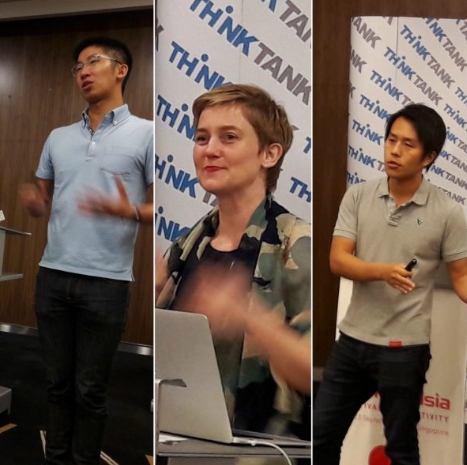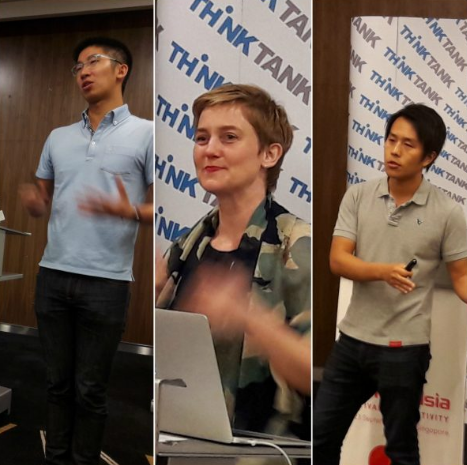
 Marketing today is all about creating personal experiences that connects with the hearts, minds and desires of consumers. Yet even as technology makes it easier than ever to connect individually with consumers, many consumers are switching off and opting out.
Marketing today is all about creating personal experiences that connects with the hearts, minds and desires of consumers. Yet even as technology makes it easier than ever to connect individually with consumers, many consumers are switching off and opting out.
At Spikes Asia’s Think Tank this year, a day-long closed-door event for senior marketers sponsored by J. Walter Thompson, experts weighed in on how comfortable consumers in our region are with sharing personal data; how to use new technologies such as VR to create personal experiences without resorting to gimmicks; and how to shake off stereotypes to connect with consumers at the right time, with the right message.
After all, as Joanna L. Catalano, Head of Creative Agency APAC Business, Google, put it: “The budgets aren’t getting bigger, and ads have to work more effectively.”
The first step is dispensing old stereotypes. J. Walter Thompson’s Female Tribes research has shown just nine percent of women feel any connection to the ads they see, and two-thirds of Asian women want to see more role models onscreen, both in film and advertising. Shereen Daver, Global Director of Female Tribes for J. Walter Thompson, talked about what this means for brands who take the lead in changing the conversation around women as consumers.
Rod Findley, Executive Creative Director for C2K Communications, laid out the next wave of reality – Virtual, Augmented and Mixed. With a TV commercial or a movie, people aren’t in control. With a VR experience, they are, which sears the experience into the memory.
“With VR, people have control of where they are looking,” Findley said. “If you give people the sense they’re discovering something it has a strong impact.” That sense of empathy, he added, should not be underestimated.
Brian Wong, the 25-year-old who founded Kiip five years ago and now counts among his clients the world’s biggest consumer companies, talked about how to target moments when consumers are most likely to welcome a message, in an always connected world.
Offering someone unexpected credits or rewards at a time when they would welcome them – a cold drink after they’ve logged a long run, for example – is most effective. Rather than create a microsite, pick your moments when people are already online on an app, and know which you want to influence, he said.
“What we are as marketers is to provide a service. It’s marketing-as-a-service. This is the key,” Wong said.
Josie Brown,J. Walter Thompson’s APAC Director of Digital, talked about areas where using artificial intelligence such as chatbots and personalization are likely to be most effective – consumer health, retail and beauty.
“Data gives us some hint on when to focus our effort,” she said, adding that Asian consumers are less wary about trading data in areas where it’s useful.
Think Tank experienced a rock star moment when Tatsuo Nomura ,Game Director of Pokemon GO and Senior Product Manager, Niantic Inc., came to talk about how serendipity led to creation of the massive worldwide hit.
Pressure to come up with a good April Fool’s joke each year had led Nomura over several years to create spoof Google maps such as a pirate treasure map, etc., which led to the creation of Pokemon GO.
The Pokemon company happened to be in the same building as Google Japan. Nomura, who worked for Google Maps in Mountain View, CA, was on a business trip to Japan. He showed a prototype of the game to Pokemon executives and they loved it.
“The point I’m trying to communicate here is that prototypes are really a powerful tool,” he said. “It doesn’t take long – only a few hours – to makes something that shows your idea. With a prototype, you can easily convince people.”
He talked about the cultural impact of Pokemon Go in getting crowds of diverse people out of their homes and entranced with one thing – catching Pokemon creatures.
“The fun is beyond what’s in the phone,” said Nomura. “It’s the places you go; it’s the people you meet.”
True to that credo, Nomura was mobbed by marketers after his talk, with a selfie-line quickly forming.
CMOs who attended this year appeared buoyed at the end of the day.
Nobukazu Aoki, marketing director of Suntory Brands in Vietnam, said he found the VR and Pokemon sessions particularly useful. “We are constantly struggling with how we can have a balance between talking about the brand, which is sometimes very boring, and telling a story. With the Pokemon monsters, we learn that if we bring in fun, maybe we have a connection. That’s today’s learning.”
Mariko Kato, senior brand manager for Mondelez International in Japan, said she appreciated the day-long focus on marketers.
“This was about innovation from a marketers’ point of view instead of innovation for creatives, which is useful for me as a marketer,” she said.
